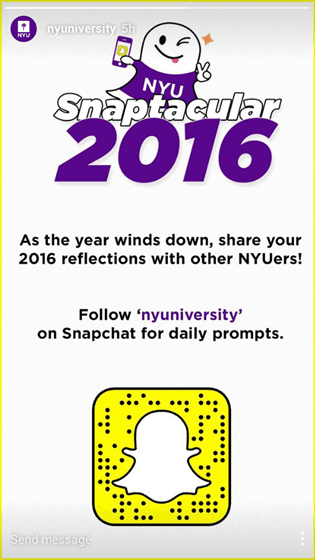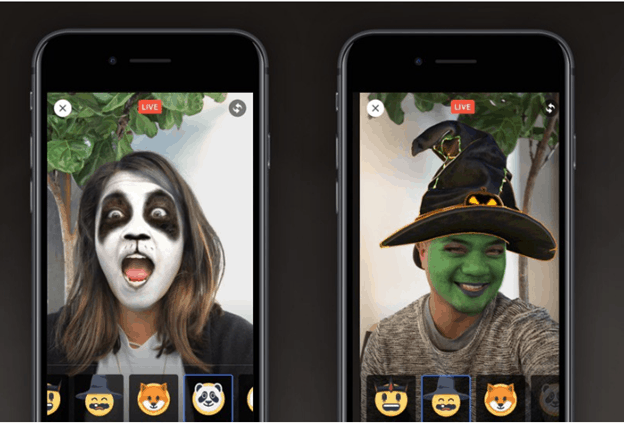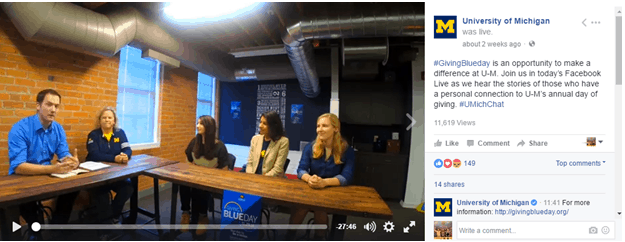
2016 once again saw a flood of changes in the world of social media. From new features – such as Facebook’s Instant Articles and Instagram Stories – to the phasing out of functions that weren’t working, like LinkedIn University pages, schools have had to keep on their toes and alter their strategies in order to continue to reach and engage with prospective students online.
So what will 2017 have in store? For schools, who often cater to a young audience, keeping ahead of the latest trends is crucial to keeping themselves relevant, visible, and accessible online. While social media can often be unpredictable, and much will depend on how the wider online audience responds to various changes and developments, a number of experts have already started piecing together what the online landscape of next year might look like.
Read on to find out what your school should be focusing on to ensure your social media marketing strategy is up to date in 2017.
1. Instagram Stories vs. Snapchat: Which Platform Will Your Prospective Students Choose?
Snapchat’s popularity reached new heights in 2016, with the app surpassing 150 million daily active users earlier in the year. Determined not to let their users go without a fight, other social platforms have been gradually moving to co-opt Snapchat’s functionality into their own applications.
The most notable example of this has been the introduction of Instagram Stories, a near identical version of the Snapchat feature of the same name, which was released earlier this year. As we discussed in a previous blog, the feature took direct aim at Snapchat’s unique selling points, offering expiring content and encouraging unedited, fun posts over the pristine, stylised visuals the site’s users usually favour.
While it’s still in its early days, Instagram Stories has been quite successful so far, and had attracted over 100 million users by August this year. 2017 is likely to see the battle between the two platforms heat up, and schools may need to maintain a presence on both in order to be competitive.
Example: New York University are active on both Snapchat and Instagram Stories, and even cross promote between the two. This post appeared on Instagram Stories encouraging users to follow the school on Snapchat.

2. Could Your School See Augmented Reality on Your Facebook Feed in 2017?
Instagram’s parent company Facebook has also intensified its efforts to win back the younger users Snapchat has attracted away from its platform. This past year saw the social media giant make an important acquisition that could help it provide more Snapchat-style functions to users, with the company purchasing video selfie animation app Masquerade.
Masquerade’s technology underpinned a new experimental camera feature the company has been testing this year, which allowed users to add various filters and lenses to Facebook Live videos. The feature was tested in various formats in Canada and Brazil during the Rio Olympics and in the Irish market later in 2016.
Example: You can get a good idea of the capabilities of Facebook’s new filter function in this picture. These filters were rolled out especially for Halloween.

Interestingly, however, Facebook CEO Mark Zuckerberg views the new feature less as a means of competing with Snapchat, than as the company’s first step into integrating Augmented Reality (AR) technology into social media.
2016 was the year AR gained mainstream attention with the success of Pokémon Go. Speaking about the game’s popularity, Zuckerburg said that, “as people look for richer and richer ways to express themselves, just like people in the past have shared a lot of text and photos on Facebook, we think in the future more of that is going to be video, and more of these augmented reality tools, I think, are going to be an important part of delivering that experience and making that fun to use and expressive as it can be.”
Just what other augmented reality elements Facebook have in mind – and whether they will be introduced at any point in 2017 – is anyone’s guess. But considering the company also owns innovative virtual reality headset manufacturer Occulus VR, the potential is there to create exciting new experiences that could change the face of your higher ed social media marketing strategy completely.
Recruitment professionals who don’t want to get left behind would be best advised to keep an eye out for further news about Facebook’s new camera features, as well as any other interesting developments on this front.
3. Streaming Goes Mainstream: Taking Your School’s Social Media Campaigns Live
As the various social media sites look to standardize their features and consolidate their user base, competition among different platforms will become more heated than ever in 2017. One of the key battlegrounds looks set to be live streaming content.
Streaming exploded in a big way in early 2016, as Twitter’s Periscope app quickly became popular among users looking to share their experiences in real-time online. Many schools were quick to realize its potential for education lead generation, hosting live campus tours and streaming footage of various events.
Example: Syracuse University is one of the many schools who use Periscope to create campus tours.

Facebook jumped on the live streaming bandwagon in a big way in the latter half of 2016 with the launch of its own streaming service Facebook Live. While fundamentally similar to Periscope, Facebook Live may offer a number of advantages when it comes to social media marketing for schools.
While Twitter owns Periscope, the app has never been integrated fully into their newsfeeds. Users need to have downloaded Periscope separately in order to view streams, and don’t receive notifications about broadcasts directly to Twitter. Facebook Live is not only fully integrated into your timeline, but in an effort to push the service, the site’s algorithm ranks streaming content highly, and also alerts all of your followers directly when you are broadcasting. Crucially, Facebook Live content also doesn’t expire, meaning you can keep broadcasts on your timeline as long you want, whereas Periscope streams disappear after 24 hours.
Example: Here’s a Facebook Live video from the University of Michigan promoting Giving Tuesday. As you can see, the post is integrated directly into the school’s timeline, and is also two weeks old. The permanence of Facebook Live posts may increase their chances of engaging prospective students.

Instagram will also be getting into the live streaming game this year, after recently announcing the addition of live video to Instagram Stories. Like Periscope, live broadcasts on Instagram will expire after the content has been broadcast, but is integrated into the site like Facebook Live, making it a potential option that provides some middle ground between the two.
Whichever streaming service emerges as the preferred choice of users, one thing is clear: streaming is now a huge part of the social media experience, and should be an essential part of your strategy.
4. Will Your Prospective Students Be Wearing Snapchat Spectacles Next Year?
One social media development which has generated considerable buzz as we come to the end of 2016 has been the launch of Snapchat Spectacles. Spectacles – essentially a pair of sunglasses which are enabled to take photos and 10-second video clips, which can then be uploaded to Snapchat – have created a lot of excitement. Much of this has been down to an innovative launch strategy, which has seen the company installing a limited number of vending machines in random locations, rather than selling them in stores or giving reviewers first access to the product.
So could Spectacles become widely used among your prospective students in 2017? It’s probably a little early to judge. While the company has succeeded in creating demand, the failure of Google Glass a few years ago shows that it’s difficult to predict the popularity of wearable tech.
You can see a demo of Spectacles here:

5. Should You Use Chatbots for Online Student Recruitment in 2017?
Messaging apps are expected to remain an important aspect of social in 2017, with Facebook Messenger, WhatsApp, Kik, and Skype, as well as internationally based apps like WeChat and QQ, all as popular as ever.
Schools have long been using messaging apps for online student recruitment, but having someone available to answer prospective students’ queries is a challenge, with time differences and limited human resources making it difficult. However, a solution could be on the way.
Facebook have now made it possible for Messenger users to create their own chatbots within the app. While building one requires some web development expertise, bots can be programmed to send and receive messages, answer common queries automatically using message templates, and even integrate images and calls-to-action.
While Facebook also own WhatsApp, it seems as though there are no plans to roll out bots on that service at present, at least until they have perfected the experience on Messenger. Skype and Kik, however, have both developed a similar bot service. Skype bots can be found through a directory, while Kik have a dedicated bot shop where developers can market their bots to users. Chinese messaging giant WeChat, meanwhile, has long integrated bots into their overall service, where users use the technology to do everything from ordering a taxi to paying bills.
Using bots to communicate with prospective students is something that recruitment professionals should approach with caution, however, as it’s uncertain how well such a specific target audience will respond to this type of communication.
In addition, a bot that delivers a poor, impersonal user experience could potentially sour leads on your institution. At present, no schools appear to have developed a bot for recruitment on any platform. It will be intriguing to see how it turns out once they do.
What Else Could 2017 Bring for Social Media & Student Recruitment?
While each of these trends are worth keeping an eye on for recruitment professionals, 2017 could also have a few surprises in store. Social media sites often keep their most exciting features and developments under wraps until they feel they are ready to present to the public, and any of these sites could well unveil other new innovations over the course of the year. Not only that, but new social media sites are always being launched, and there’s no telling when the next Snapchat or Instagram will arrive on the scene.
But one of the exciting things about working in digital marketing for schools is that how you reach and engage with prospective recruits is constantly evolving. And as long as you continue to keep your finger on the pulse and work hard to refine and develop your strategy in line with changes in the industry, you can continue to stay ahead of the game in 2017 and beyond. Happy New Year!
Where is your school focusing its recruitment efforts in 2017? What are the biggest challenges you expect to face? Leave a comment below and let us know!






